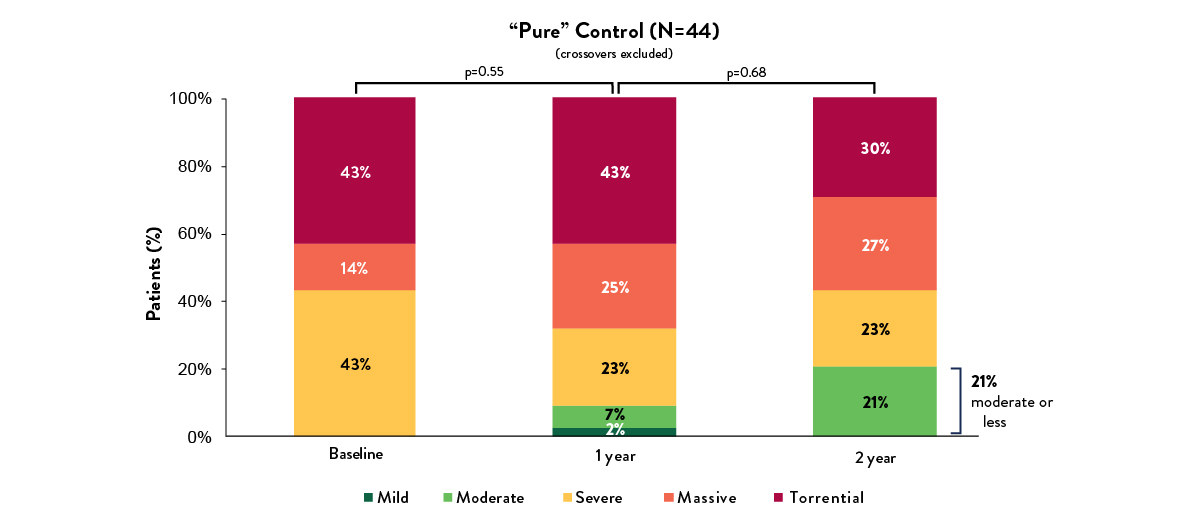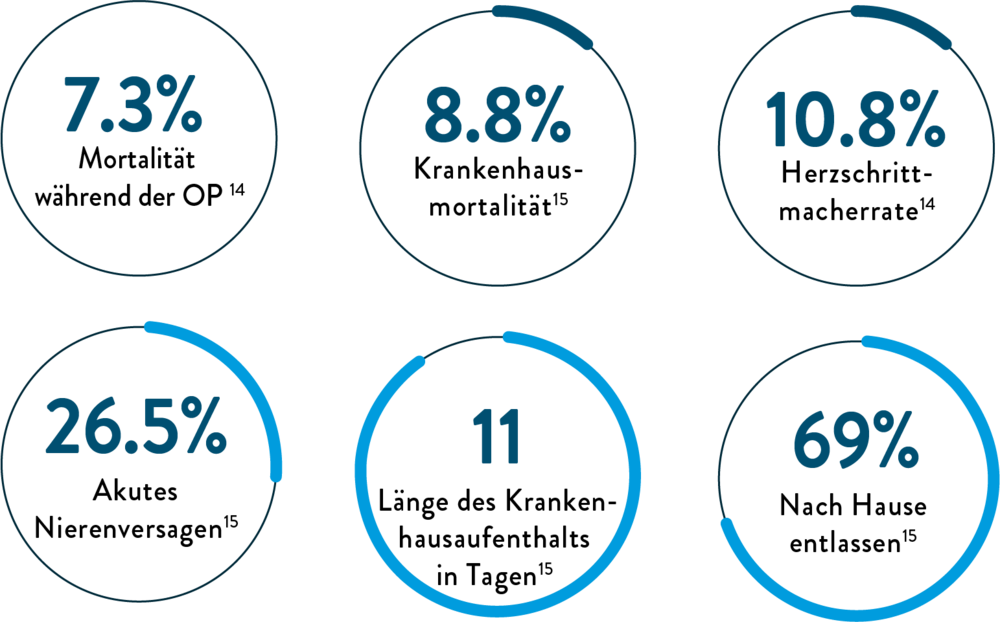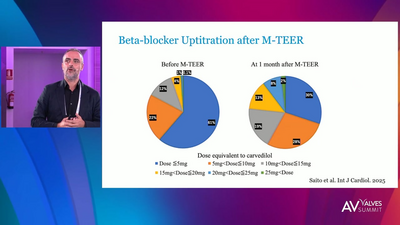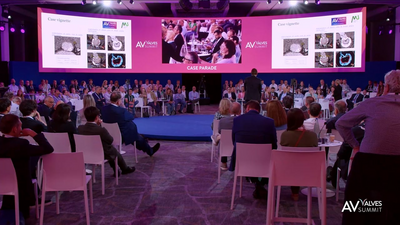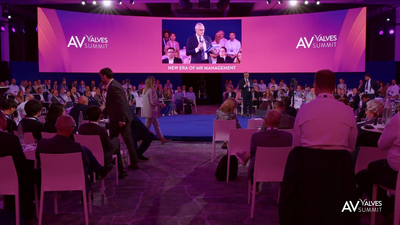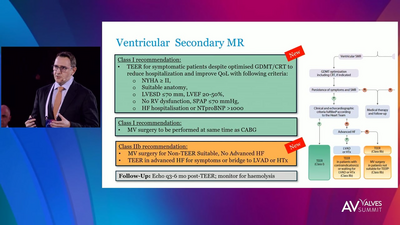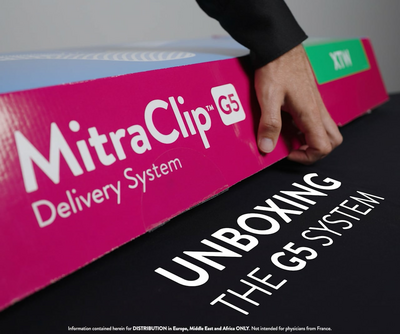EDGE-TO-EDGE REPARATUR (TEER)
Die TriClip™ Transkatheter Edge-to-Edge Repair (TEER) bietet
eine minimal-invasive Behandlungsoption für Patienten mit
symptomatischer, schwerer Trikuspidalinsuffizienz (TI),
für die eine Operation ein hohes Risiko darstellt.1
EINE HOCHMODERNE BEHANDLUNGSOPTION FÜR PATIENTEN MIT HOHEM OPERATIONSRISIKO
TriClip™ TEER ist eine risikoarme,5 minimal-invasive, nicht-chirurgische Behandlungsoption für symptomatische Patienten mit schwerer Trikuspidalinsuffizienz (TI), bei denen ein hohes Risiko für eine Operation besteht und die durch eine alleinige medikamentöse Therapie keine Besserung erfahren.
- TriClip G5 System IFU
- Abbott. Data on file. PS2203200
- Abbott. Data on file. PS2203401
- Abbott. Data on file. PS2203500
- Abbott. Data on file. PS2203501
- Kar S, Makkar RR, Whisenant BK, et al. Two-year outcomes of transcatheter edge-to-edge repair for severe tricuspid regurgitation: The TRILUMINATE Pivotal Randomized Trial. Circulation. March 30, 2025. doi:10.1161/CIRCULATIONAHA.125.074536
- Estevez-Loureiro R. Real-world Outcomes for Tricuspid Edge-to-Edge Repair: Initial 2-year Outcomes from the bRIGHT Trial. Presented at PCR London Valves on November 19-21, 2023; London, UK.
- Adams D, Sorajja P, et al. TRILUMINATE Pivotal: Outcomes of All Randomized and Single-arm Subjects with Transcatheter Tricuspid Valve Edge-to-Edge Repair for Tricuspid Regurgitation. Presented at TCT on October 24, 2023; San Francisco, CA; USA.
- Tang GHL, Hahn RT, Whisenant BK, et al. Tricuspid transcatheter edge-to-edge repair for severe tricuspid regurgitation: 1-year outcomes from the TRILUMINATE randomized cohort. J Am Coll Cardiol. Published online 2025;85(3):235-246. doi:10.1016/j.jacc.2024.10.08
- Lurz P, Rommel KP, Schmitz T, et al. Real-world 1-year results of tricuspid edge-to-edge repair from the bRIGHT study. J Am Coll Cardiol. 2024;84(7):607-616. doi:10.1016/j.jacc.2024.05.006
- Sorajja P, Whisenant B, Hamid N, et al. Transcatheter repair for patients with tricuspid regurgitation. NEJM. March 4, 2023. doi: 10.1056/NEJMoa2300525.
- www.mayoclinic.org. Accessed February 2024
- Benfari G, Antoine C, Mille WL, et al. Excess mortality associated with functional tricuspid regurgitation complicating heart failure with reduced ejection fraction. Circulation. 2019;140(3):196-206.
- Asmarats L, Puri R, Latib A, et al. Transcatheter tricuspid valve interventions: landscape, challenges, and future directions. J Am Coll Cardiol. 2018;71(25):2935-2956.
- Enriquez-Sarano M, Messika-Zeitoun D, Topilsky Y, et al. Tricuspid regurgitation is a public health crisis [published online ahead of print November 9, 2019]. Prog Cardiovasc Dis. 2019;62(6):447-451. Doi:10.1016/j.pcad.2019.10.009.
- Wong WK, Chen SW, Chou AH, et al. Late outcomes of valve repair versus replacement in isolated and concomitant tricuspid valve surgery: a nationwide cohort study. J Am Heart Assoc. 2020;9(8):e015637. doi:10.1161/JAHA.119.015637.
- Zack CJ, Fender EA, Chandrashekar P, et al, National trends and outcomes in isolated tricuspid valve surgery. J Am Coll Cardiol. 2017;70(24):2953–2960. doi:10.1016/j.jacc.2017.10.039.
- Chen Q, Bowdish ME, Malas J, et al. Isolated tricuspid operations: The Society of Thoracic Surgeons Adult cardiac surgery database analysis. Ann Thorac Surg. 2023;115(5):1162–1170. doi:10.1016/j.athoracsur.2022.12.041.Data on File at Abbott.
- Data on File at Abbott.
- Abbott. Data on file. RPT2139672
- Test(s) performed by and data on file at Abbott. (RPT2133700, RPT2122822-R, RPT2124838-R)
- Lurz P, et al. Real-world Outcomes for Tricuspid Edge-to-Edge Repair: Initial 30-Day Results from the TriClip™ bRIGHT Study. Data presented at Euro PCR 2022.
- Tang, G, Hahn, R, Whisenant, B. et al. Tricuspid Transcatheter Edge-to-Edge Repair for Severe Tricuspid Regurgitation: 1-Year Outcomes From the TRILUMINATE Randomized Cohort. JACC. 2025 Jan, 85 (3) 235-246. doi.org/10.1016/jjacc.2024.10.086

